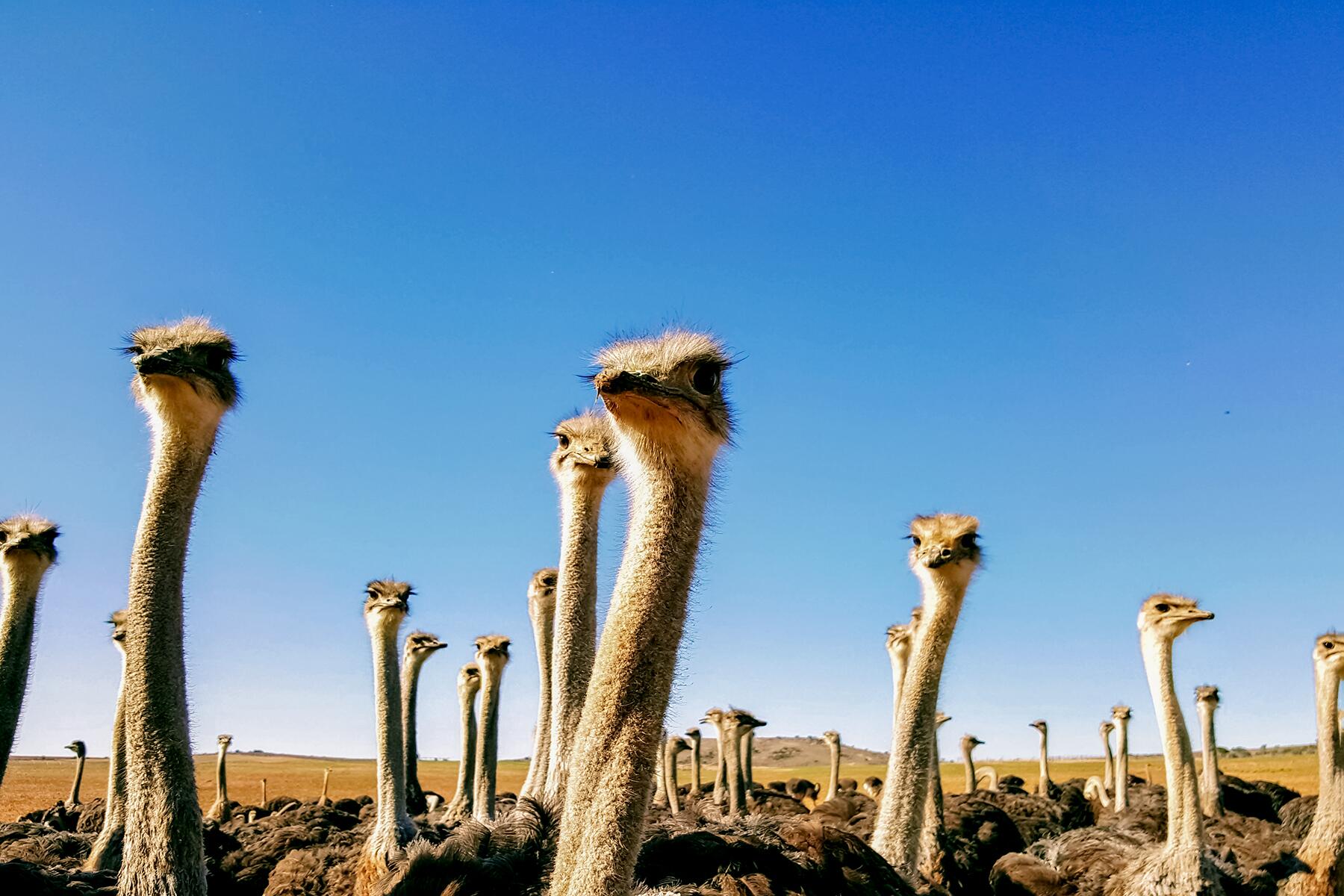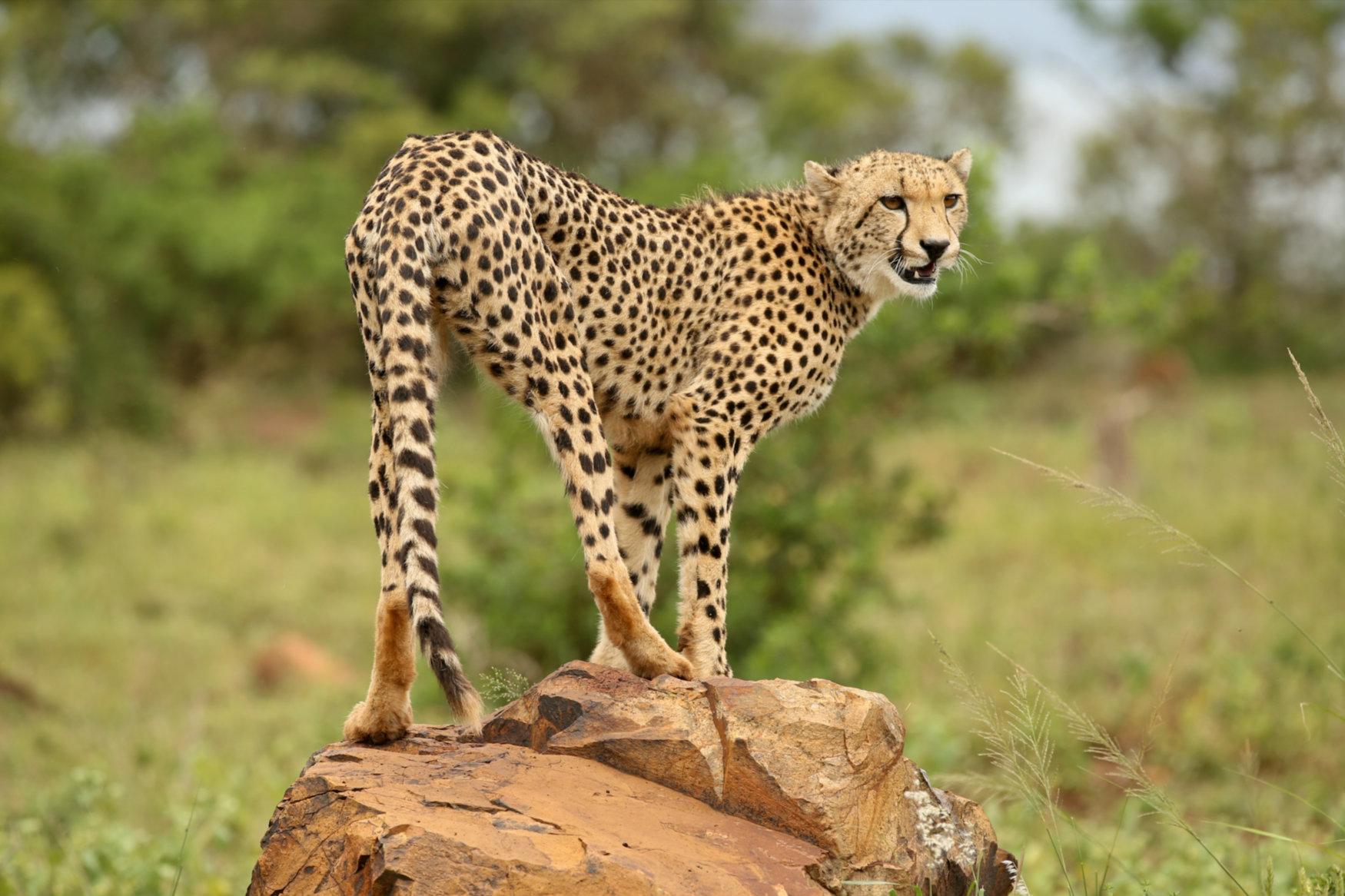The Northern Cape
The Northern Cape
South Africa's largest province, the Northern Cape, is also its least populated. Covering almost a third of the country, its deserts and semi-deserts—the Karoo, Kalahari, Namaqualand, and Richtersveld—stretch from the Orange River in the north to the Western Cape border in the south. From the small towns of Springbok and Port Nolloth in the west across 1,000 km (630 miles) to Pofadder and Hotazhel to the diamond capital, Kimberley, in the east, this is a place of large and rugged beauty—a far cry from the verdant greenness of Mpumalanga.
The Northern Cape's appeal is in its sense of loneliness, its sparse but remarkable vegetation, and its occasional lunar landscapes. All told, it covers an area of 363,389 square km (225,665 square miles), roughly a third bigger than the entire Un...
Read MoreSouth Africa's largest province, the Northern Cape, is also its least populated. Covering almost a third of the country, its deserts and semi-deserts—the Karoo, Kalahari, Namaqualand, and Richtersveld—stretch from the Orange River in the north to the Western Cape border in the south. From the small towns of Springbok and Port Nolloth in the west across 1,000 km (630 miles) to Pofadder and Hotazhel to the diamond capital, Kimberley, in the east, this is a place of large and rugged beauty—a far cry from the verdant greenness of Mpumalanga.
The Northern Cape's appeal is in its sense of loneliness, its sparse but remarkable vegetation, and its occasional lunar landscapes. All told, it covers an area of 363,389 square km (225,665 square miles), roughly a third bigger than the entire United Kingdom, but it has a population of less than a million people (only about two per square km), and most are concentrated in a handful of towns.
Many of the Northern Cape's attractions are linked to mining, which has been the province's economic backbone for more than a century. First there was the copper mania of the 1840s in Namaqualand, evidence of which is found in towns like Okiep and Nababeep. The deepest copper mines in the world are still operating here, although they are nearing the end of their productive lives. But the history of copper mining was eclipsed 30 years later by the frenzied scrabbling for diamonds on the other side of what is now the Northern Cape.
Kimberley, known as the City of Diamonds, is the provincial capital and in the 1870s was the site of one of the world's greatest diamond rushes. Thousands of hopeful diggers trekked to the hot, dusty diamond fields sitting in what is more or less the geographical center of South Africa. In Kimberley five diamond-bearing volcanic pipes were eventually discovered within a few miles of one another—a phenomenon unknown anywhere else in the world. But for real (and colorful) diamond tales, the far northern town of Port Nolloth is the real deal. In the Aukwatowa museum, veteran navy and diamond diver George Moyses is a colorful, unorthodox mine of information who can keep you engaged for hours. Apart from copper and diamonds, the province's mineral deposits range from manganese and zinc to lime, granite, gypsum, and other gemstones, and there are even oil and gas fields off the Namaqualand coast.
Although only a fraction of the province is regarded as arable because of low rainfall, the Orange River (known as the !ariep—the exclamation mark indicates a click of the tongue against the roof of the mouth—or "mighty river by the Nama") flows the breadth of the province, emptying into the Atlantic Ocean at Alexander Bay, on the Namibian border. South Africa's largest and longest river, the Orange supplies water to numerous irrigation schemes that sustain farming, most noticeably in the "Green Kalahari," which is a pleasant, roughly 70-km (43-mile) drive between Upington and Augrabies.
Agriculture employs the most people in the province, and you'll find varied agricultural production, from the second-largest date plantation in the world, at Klein Pella, near Pofadder (named after the highly poisonous puff adder snake), to thousands of acres of grapes under irrigation in the Orange River basin around Upington. The province boasts the country's second-largest national park, Kgalagadi Transfrontier Park, the first transfrontier (i.e., crossing a national border) park in Africa. Together with an adjoining national park in Botswana, this park forms one of the largest conservation areas in the world. Ecotourism also draws an annual pilgrimage of thousands, who come to see the spectacular Namaqualand flowers far southwest of the park.
The Northern Cape is a harsh province that begs to be driven—flying is an expensive luxury—but therein lies its beauty. There's plenty to see if you're the type who's not afraid to ask questions and to go where your nose leads you. You have to look hard if you’re after luxurious accommodation and fine cuisine, but when you find it, it’ll be worth it. Such is the joy of discovery in South Africa’s less-traveled province. What you can expect, given a little time and patience, are sleepy villages and charming locals who appreciate visitors tremendously, albeit in very broken, accented English. This is a place of natural wonders—particularly the Khoi San first people—and unusual, unique crafts. It’s an off-the-beaten-path getaway that could well turn out to be the highlight of your trip to South Africa.
Recommended Fodor’s Video
Hotels
Things to Do
Things to Do
Explore Things to Do
Find the perfect tours and activities in The Northern Cape.
Where to Eat
Where to Eat
Need to Know
Need to Know
Language
Afrikaans, English, Ndebele, Northern Sotho, Sotho, Swazi, Tswana, Tsonga, Venda, Xhosa and ZuluElectrical Outlets
220v and 230v/50 cycles; plugs have three round prongsCurrency
Rand, pegged with Lesotho loti, Swazi lilangeni and Namibian dollarLanguage
Afrikaans, English, Ndebele, Northern Sotho, Sotho, Swazi, Tswana, Tsonga, Venda, Xhosa and ZuluElectrical Outlets
220v and 230v/50 cycles; plugs have three round prongsCurrency
Rand, pegged with Lesotho loti, Swazi lilangeni and Namibian dollarWhen to Go
By South African standards the Northern Cape's climate is exceptionally hot in summer (late November–February), often rising to above 35°C ...Read More
Neighborhood Guides
Discover the best neighborhoods in The Northern Cape with curated recommendations from our editors.
essentials
transportation
resources
When to Go
By South African standards the Northern Cape's climate is exceptionally hot in summer (late November–February), often rising to above 35°C ...Read More
Neighborhood Guides
Discover the best neighborhoods in The Northern Cape with curated recommendations from our editors.
When to Go
By South African standards the Northern Cape's climate is exceptionally hot in summer (late November–February), often rising to above 35°C ...Read More
Neighborhood Guides
Discover the best neighborhoods in The Northern Cape with curated recommendations from our editors.
essentials
transportation
resources
Articles
Articles See All
Guidebooks
Guidebooks
Our worldwide travel correspondents bring you the best and most up-to-date coverage of over 7,500 global destinations.
Shop NowFodor's Essential South Africa: with the Best Safari Destinations and Wine Regions
Whether you want to explore the Winelands, visit Kruger National Park, or climb Table...













